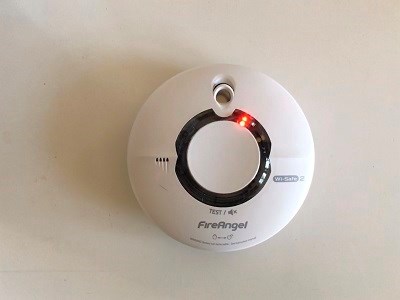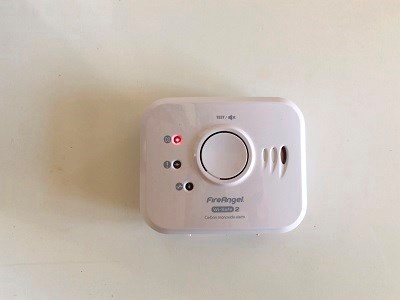Fire safety at home
It can be common for parents of deaf children and young people to worry that their child won’t hear the fire or carbon monoxide alarm, particularly after they’ve moved out and are living independently. But there are plenty of alternative alarm options, and most of them are available for free from local service providers.
Fire alarms
What your deaf child is offered by the local Fire and Rescue Service can vary across the UK. In many areas, your child can be provided with a deaf friendly smoke alarm for free when they start living on their own. Deaf children living with their parents are usually not eligible for a free deaf friendly smoke alarm, though you could, of course, buy one yourself.
In most counties, deaf young people living independently will be offered a free smoke alarm linked to a vibrating pad and strobe light if they contact their local Fire and Rescue Service. In England, Northern Ireland and Wales, a deaf young person would contact their county’s Fire and Rescue Service directly – either via its headquarters or district station. In Scotland, you should contact your local community fire station first.
Usually the Fire and Rescue Service will then arrange a Safe and Well visit to assess the home. In many cases this involves the deaf young person taking their hearing devices off, while the Safe and Well officer sets off a smoke alarm and checks if they’d be able to hear the alarm at night. If they can’t, they’re usually provided with at least one loud smoke alarm per floor and a vibrating pad and strobe light for the bedroom. All parts are wirelessly connected. The vibrating pad will alert your child to the smoke alarm when they’re sleeping.
Most Fire and Rescue Services order their smoke alarms from a list of providers, which ensures only alarms of a certain standard are supplied. That’s why many areas provide the same deaf-friendly alarms, such as the FireAngel Wi-Safe 2 wireless smoke alarm or FireBlitz Firehawk alarms. In a FireAngel Wi-Safe 2 system, up to 50 alarms and alerting units can be interlinked in one property, and in Firehawk systems, 15 units can be linked. If you feel the number of smoke alarms provided is not enough for your home, you can buy additional alarms from the same system and wirelessly connect them yourself.

If a deaf young person is also unable to hear the smoke alarm during the day, they’ll most likely be referred to the local Sensory Support Team or another local service. They’ll then be set up with equipment that alerts them via visual and tactile means at any time and wherever they are in the house. This is often the wireless Bellman & Symfon Visit Alerting System. This system can alert your child to a range of things around the house, including smoke and carbon monoxide alarms. When the alarm goes off, it wirelessly sends a signal to a receiver which can be a vibrating wristband, a flashing light, a vibrating pager, or a vibrating alarm clock. Multiple alarms and receivers can be used at the same time.
Carbon monoxide and heat alarms
Fire and Rescue Services normally don’t provide carbon monoxide alarms, but if there are fuel-burning appliances in the home, such as a gas boiler, a detector should be fitted in each room containing those appliances.
Fire and Rescue Services also don’t usually provide heat alarms for deaf people, but they may be useful in areas where smoke or fumes are likely to occur, and smoke alarms could be falsely triggered, such as kitchens and garages. Heat alarms go off when they sense high temperatures or rapidly rising temperatures. If you or your deaf child decide to buy a carbon monoxide or heat alarm, then it can be linked to the deaf-friendly system your Fire and Rescue Service provides and no additional vibrating pad and strobe light are needed.

"We tried out the FireAngel Wi-Safe 2 system’s smoke alarm, carbon monoxide alarm, and the combined strobe and vibrating pad unit. The smoke and carbon monoxide alarms have different loud, high-frequency signals. The combined strobe and vibrating pad unit has a bright strobe light, and a long cable that connects to a strong vibrating pad. The pad also has small lights on it to indicate which alarm is going off. It’s very easy to wirelessly link the parts together."
Smoke alarms will alert you once a fire has started, but it’s obviously better to prevent fires from happening in the first place and to stop them from spreading. Watch Commander Michael Duffy, from the Northern Ireland Fire and Rescue Service, shares his tips.
- Don’t plug too many appliances into a socket and unplug non-essential appliances at night as they may generate heat and start a fire.
- Close all doors at night. Doors add extra protection and may help prevent a fire from growing.
- Don’t smoke in bed. Put out all cigarettes and empty ashtrays into a noncombustible container before you go to bed.
- Have a fire escape plan and practise it regularly with everyone in the house, and remember you can find home fire safety advice at Northern Ireland Fire and Rescue Service
